What is the field 'Gross vehicle weight' and how should I use it?
The optional field is introduced in order to be able to calculate the CO2 values more precisely. If the weight of the vehicle is known, the CO2 values for individual route sections of the shipment can be calculated more precisely.
Gross vehicle weight
The field is introduced on several applications in Scope. Here are the four main spots:
The unit for Gross vehicle weight is metric tons (t).
Note that Gross vehicle weight is not the actual weight of the truck. It is a value for the allowed maximum weight of the vehicle.
- Transport orders in the general tab of Air/Sea Import or export shipments.
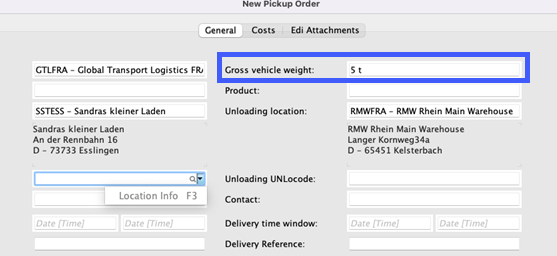
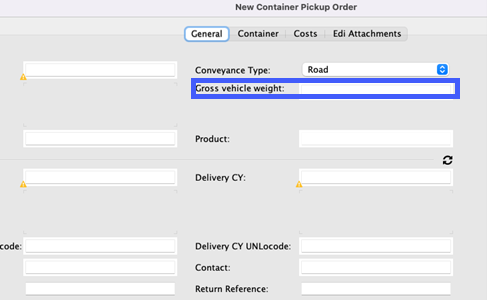
- Simple Shipment, Conveyance Type Road, tab General
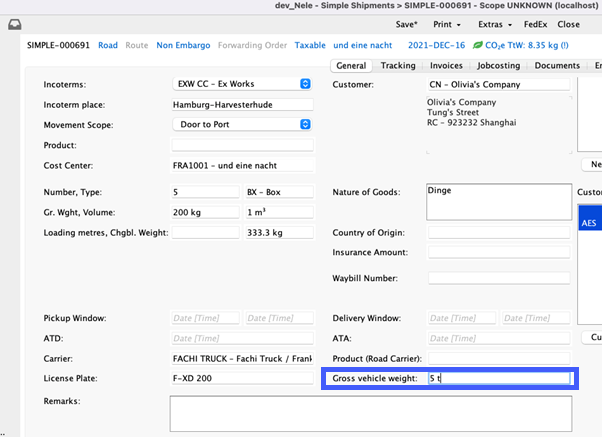
Enter the gross vehicle weight manually or automatically via the license plate. - Routes/Tour, Route-Templates, Truck Manifest
In the dialogs for a route, a route template or a truck manifest, the vehicle weight can either be entered manually or filled in automatically via the license plate. If a license plate is selected whose truck has a permissible total weight entered, this weight is automatically entered in the corresponding field.
Forwarding > Routes > tab General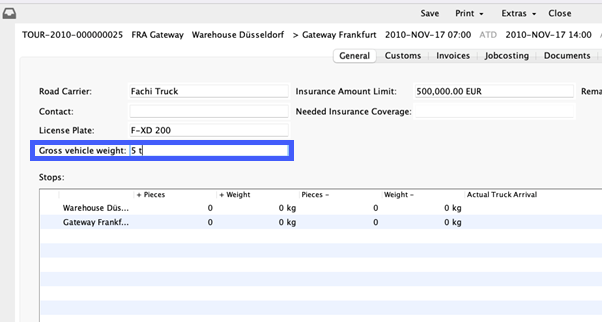
Master Data > Forwarding > Route-Templates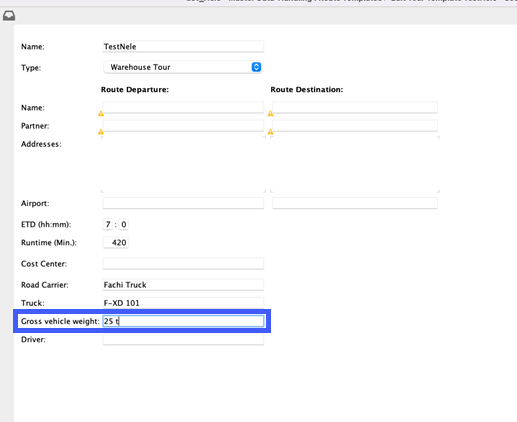
Airfreight > Truck Manifest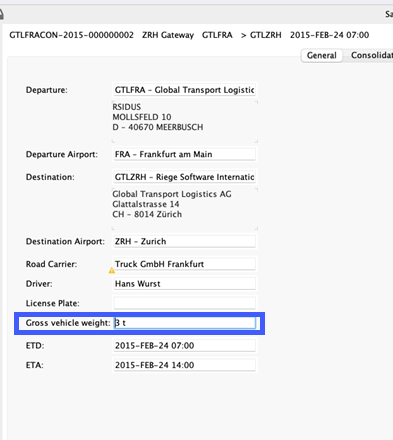
- Truck in RoadCarrier role (Partner Maintenance)
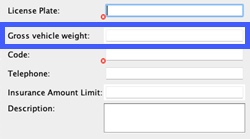
Go to Master Data > Partner ... open a partner ... tab Roles >
Select/add role RoadCarrier > New/Edit Truck(s)
The weight for a truck can be entered via the Road Carrier role in a partner. In both the New Truck and Edit Truck actions, it is possible to fill the weight field and save it on a truck. This info can be accessed via the license plate of the truck.
CO2 Calculation
It is not assumed that the shipment is the only one transported on the truck, but that the truck is loaded to a certain percentage. The CO2 value therefore decreases if a larger vehicle is specified because the CO2 produced by the truck is distributed over more loads.
To learn more about the CO2 calculation approach in Scope, please read our article about the CarbonCare integration: https://service.riege.com/en/knowledge/co-calculator-for-each-shipment-in-scope-with-carboncare.
